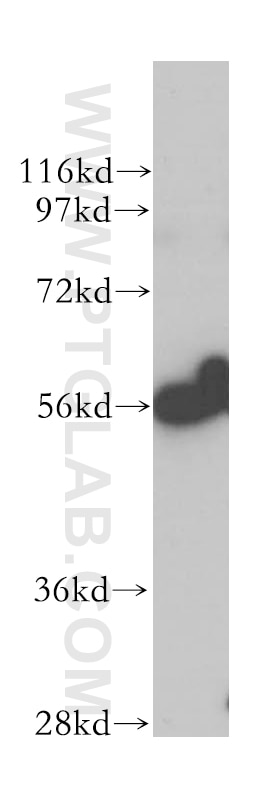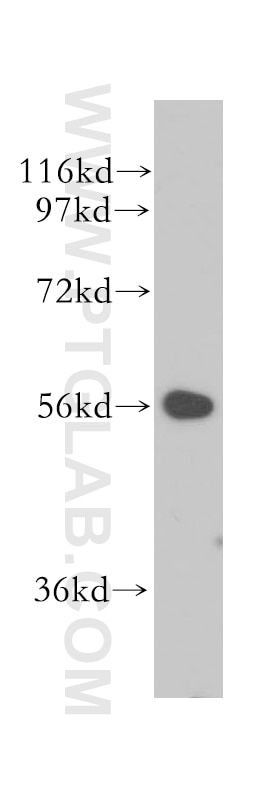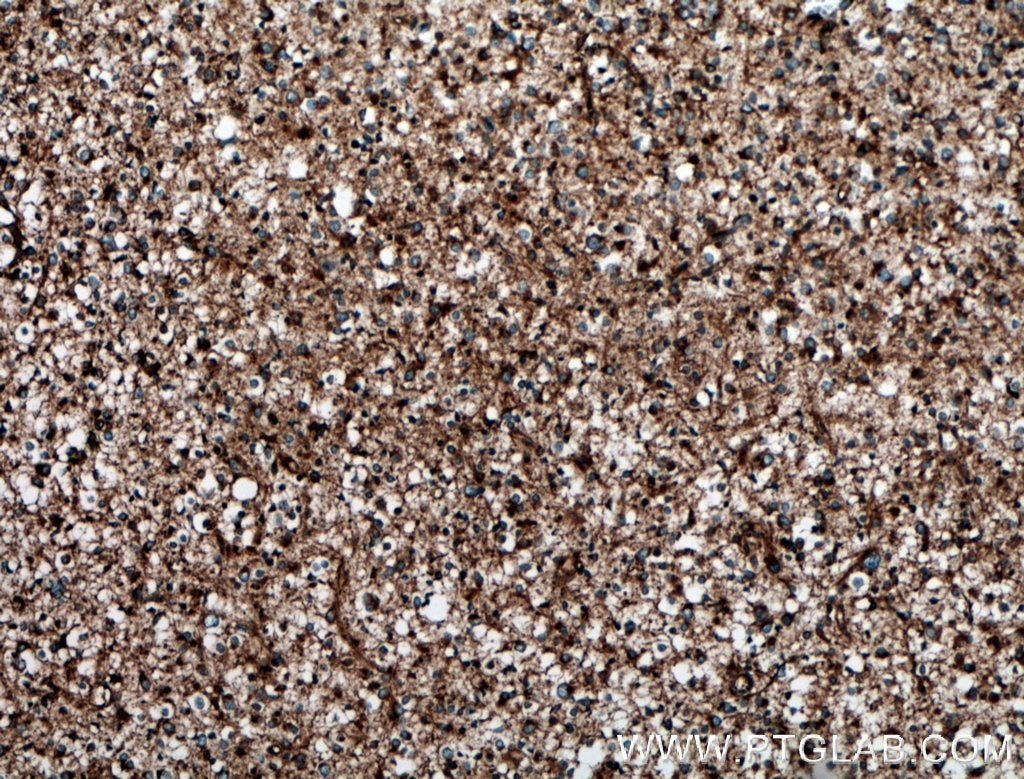Anticorps Polyclonal de lapin anti-LAP3
LAP3 Polyclonal Antibody for WB, IHC, ELISA
Hôte / Isotype
Lapin / IgG
Réactivité testée
Humain, rat, souris
Applications
WB, IHC, ELISA
Conjugaison
Non conjugué
N° de cat : 14612-1-AP
Synonymes
Galerie de données de validation
Applications testées
| Résultats positifs en WB | cellules HeLa, cellules HepG2, cellules SH-SY5Y, tissu cardiaque de souris, tissu pulmonaire de souris, tissu splénique de souris |
| Résultats positifs en IHC | tissu de gliome humain, il est suggéré de démasquer l'antigène avec un tampon de TE buffer pH 9.0; (*) À défaut, 'le démasquage de l'antigène peut être 'effectué avec un tampon citrate pH 6,0. |
Dilution recommandée
| Application | Dilution |
|---|---|
| Western Blot (WB) | WB : 1:500-1:1000 |
| Immunohistochimie (IHC) | IHC : 1:50-1:500 |
| It is recommended that this reagent should be titrated in each testing system to obtain optimal results. | |
| Sample-dependent, check data in validation data gallery | |
Applications publiées
| WB | See 3 publications below |
| IHC | See 1 publications below |
Informations sur le produit
14612-1-AP cible LAP3 dans les applications de WB, IHC, ELISA et montre une réactivité avec des échantillons Humain, rat, souris
| Réactivité | Humain, rat, souris |
| Réactivité citée | rat, Humain, souris |
| Hôte / Isotype | Lapin / IgG |
| Clonalité | Polyclonal |
| Type | Anticorps |
| Immunogène | LAP3 Protéine recombinante Ag6205 |
| Nom complet | leucine aminopeptidase 3 |
| Masse moléculaire calculée | 56 kDa |
| Poids moléculaire observé | 56 kDa |
| Numéro d’acquisition GenBank | BC065564 |
| Symbole du gène | LAP3 |
| Identification du gène (NCBI) | 51056 |
| Conjugaison | Non conjugué |
| Forme | Liquide |
| Méthode de purification | Purification par affinité contre l'antigène |
| Tampon de stockage | PBS avec azoture de sodium à 0,02 % et glycérol à 50 % pH 7,3 |
| Conditions de stockage | Stocker à -20°C. Stable pendant un an après l'expédition. L'aliquotage n'est pas nécessaire pour le stockage à -20oC Les 20ul contiennent 0,1% de BSA. |
Informations générales
LAP3(Leucine aminopeptidase 3) is also named as LAPEP, PEPS(peptidase S) and belongs to the peptidase M17 family. It can catalyzes the removal of unsubstituted N-terminal amino-acids from various peptides and be presumably involved in the processing end regular turnover of intracellular proteins. PEPS is found in a wide variety of tissues and cultured cells but not in red cells and skin. The enzyme can utilize several di-, tri-, and tetrapeptides as substrates and is the slowest migrating of the peptidases after electrophoresis.(PMID:689684).
Protocole
| Product Specific Protocols | |
|---|---|
| WB protocol for LAP3 antibody 14612-1-AP | Download protocol |
| IHC protocol for LAP3 antibody 14612-1-AP | Download protocol |
| Standard Protocols | |
|---|---|
| Click here to view our Standard Protocols |
Publications
| Species | Application | Title |
|---|---|---|
Int J Biochem Cell Biol The alteration of protein profile induced by cigarette smoking via oxidative stress in mice epididymis. | ||
Front Genet Mitochondrial-related hub genes in dermatomyositis: muscle and skin datasets-based identification and in vivo validation | ||
Reprod Toxicol 2,2',4,4'-Tetrabromodiphenyl ether disrupts spermatogenesis, impairs mitochondrial function and induces apoptosis of early leptotene spermatocytes in rats. | ||
Cancer Genomics Proteomics Proteomic Analysis of Hepatocellular Carcinoma Tissues With Encapsulation Shows Up-regulation of Leucine Aminopeptidase 3 and Phosphoenolpyruvate Carboxykinase 2. |










